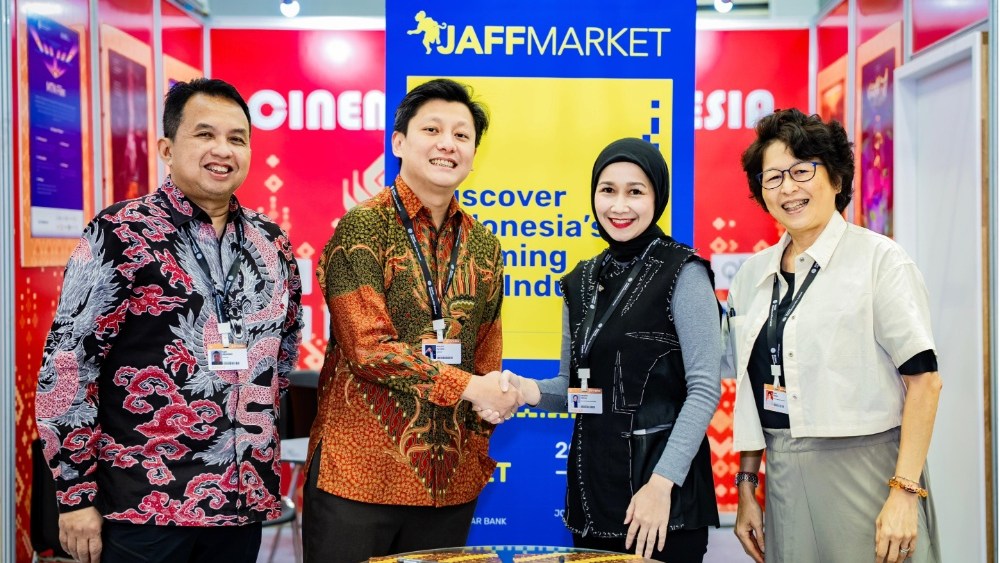JAFF Market Partners With Cinepoint to Track Indonesia Film Boom
JAFF Market, the industry arm of Indonesia‘s Jogja-Netpac Asian Film Festival has inked a data partnership with Cinepoint to document the country’s striking film market reversal, where domestic productions now regularly beat Hollywood imports at the box office.
The collaboration was unveiled at the Asian Contents & Film Market in Busan, positioning the deal as key to understanding Indonesia’s rapid ascent in regional cinema.
Through the partnership, Cinepoint will serve as JAFF Market’s official data provider, offering comprehensive tracking of theatrical performance, genre trends and production metrics across Indonesia’s expanding cinema network.
“JAFF Market is an ideal partner to turn data into impact,” said Sigit Prabowo, co-founder and president commissioner of Cinepoint. “Together, we’re building an ecosystem that supports smarter decisions and long-term, sustainable growth.”
The collaboration comes as Indonesia’s film landscape undergoes a fundamental shift. Local titles that once struggled against imported blockbusters have now claimed the dominant position, with homegrown productions attracting significantly more admissions than international films since 2022 — a complete reversal from the previous decade.
The data reveals that audience loyalty has structurally realigned toward Indonesian storytelling, with local films now drawing 30-40 million annual admissions compared to imports’ 20-25 million range. This marks a dramatic turnaround from earlier years when imported titles commanded roughly double the audience of domestic productions.
“Working with Cinepoint allows us to deliver integrated and actionable insights to industry players,” said Gundy Cahyadi, head of analytics at JAFF Market. “Our analytics team at JAFF Market is closely examining cinema admissions, screen growth, content output, and evolving audience behavior with greater clarity. These insights are critical to building a real-time, evidence-based decision-making framework for producers, distributors, platforms, and policymakers.”
Horror has emerged as the breakout genre, with producers now releasing dozens of scary movies annually — a post-pandemic boom that has placed multiple horror titles among Indonesia’s biggest box office hits ever. The success has spawned various hybrid formats mixing horror with comedy, religious themes and action.
Animation and comedy are also showing strong growth, signaling diversification beyond the drama productions that once dominated local output.
JAFF Market’s forecasts, backed by Cinepoint data, project Indonesian cinema admissions will climb from 126 million in 2024 to 100 million annually for local films alone by 2026. Annual production is expected to jump from 152 titles to approximately 200 within four years.
The theatrical infrastructure is expanding to support this growth, with screen counts projected to increase from over 2,200 currently to 2,700 by 2030. Much of this expansion targets smaller cities where cinema culture is still developing.
Despite the impressive numbers, per-capita attendance remains below 0.5, suggesting substantial room for further audience development as the country’s economy and urbanization continue advancing.
“It’s no longer about choosing between screens,” said Sekarini Seruni, business director of JAFF Market. “Indonesian films now launch through festivals, theaters, and digital platforms; each channel plays a unique role in amplifying a story’s reach.”
The partnership will inform discussions at JAFF Market 2025, scheduled for Nov. 29-Dec. 1 in Yogyakarta. The second edition of the market, sponsored by Amar Bank, will feature project development programs, content markets, talent initiatives and industry screenings.
The event runs alongside JAFF’s 20th anniversary festival, which will present retrospectives and premieres from Nov. 29-Dec. 6.
“Together, JAFF and JAFF Market are defining Indonesia’s place in the global film ecosystem,” Seruni said. “We’re not just celebrating growth, we’re shaping the next decade of Southeast Asian cinema.”

